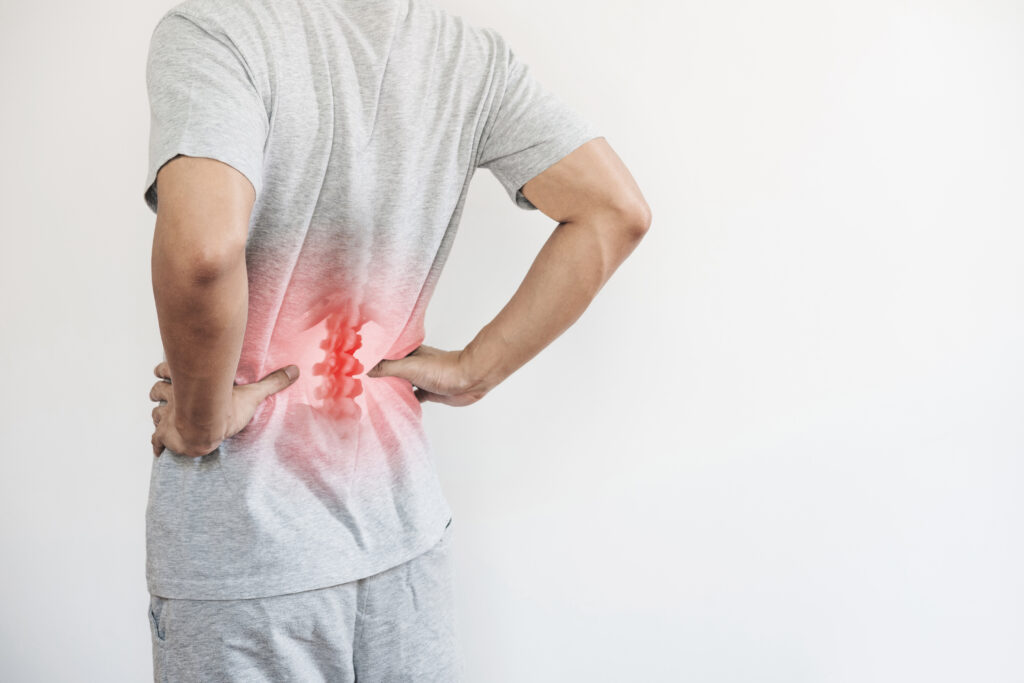Menu
Back pain is a very common medical condition that affects a majority of individuals at some point in their lives. It can range from temporary to chronic, causing mild discomfort to severe debilitation. Unfortunately, the mainstream current approach to addressing the underlying conditions of chronic back pain focuses primarily on managing the pain by masking the symptoms, which ultimately worsens the condition and the pain over time.
There are various factors that can cause back pain, with the lower back (lumbar spine) being particularly susceptible due to its role in supporting the upper body and facilitating movement. Everyday activities, sports injuries, falls, and auto accidents can strain ligaments or muscles, leading to back pain. As we age, numerous conditions can contribute to back pain, including:

Although the upper back (thoracic spine) is less prone to pain, conditions like kyphosis, scoliosis, and compression fractures caused by osteoporosis can still affect it. The symptoms accompanying back pain vary depending on the cause, such as a dull ache or sharp pain that limits movement. Nerve compression can lead to sciatica, characterized by debilitating electric shock-like pain radiating down one leg. Other symptoms may include tingling, burning sensations, numbness, weakness in the leg and foot, as well as bladder and bowel dysfunction.
To diagnose back pain, a specialist would typically review the patient's medical history, perform a physical examination, and order imaging tests like X-rays, MRIs, or CT scans. Treatment for back pain often starts with conservative measures like medication, activity modification, and physical therapy. If these approaches fail to provide relief, interventional procedures may be recommended to target the underlying cause. Examples of such procedures include epidural steroid injections, facet joint injections, spinal cord stimulation, radiofrequency ablation, nerve blocks, kyphoplasty, vertebroplasty, and surgery.
Can stem cells help back pain?
When recovering from an injury, the journey to regain health can often be challenging and lengthy. However, individuals, whether athletes or the average person, who have been diagnosed with an injury or condition, may be looking for an alternative treatment to the traditional pain management or surgical approach.
Stem cell therapy is increasing in popularity with athletes and the average patient due to its success and shortened recovery compared to traditional procedures. Our Total Spine Procedure is a minimally invasive procedure that consists of injecting a combination of bone marrow and adipose stem cells into the damaged area of the spine to facilitate the body's natural healing process.
At Total Spine and Wellness, we frequently utilize stem cell therapy as a non-operative, regenerative approach. This treatment option provides patients with low risk and minimal downtime while delivering excellent results.
